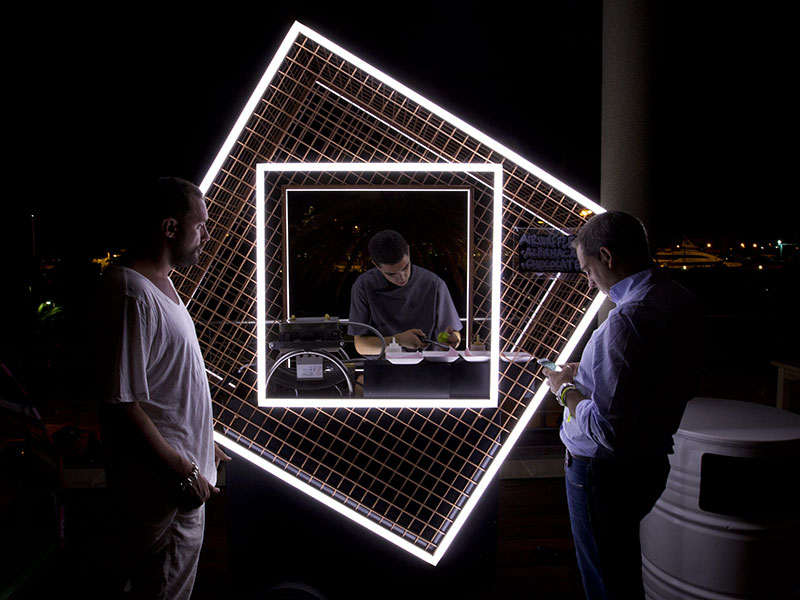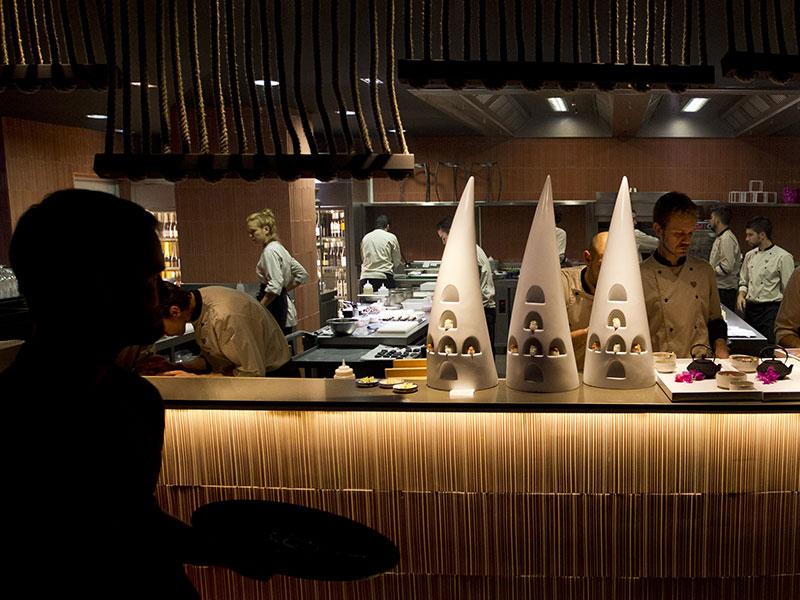A taste sensation: the rise of Europe’s multisensory restaurants
Author: Barclay Ballard
For some restaurants, food is only one part of the package. Multisensory establishments are choosing to use sight, sound and smell to create truly unforgettable experiences.

Recent studies indicate that 50 percent of people would pay more for the exact same menu if it included chef interaction – a common feature at multisensory restaurants
Along Barcelona’s bustling Avinguda del Paral-lel sits Tickets, a restaurant in which individuals can be forgiven for thinking they are about to enjoy a circus performance rather than a Michelin-star meal. In Parlour in West London, Head Chef Jesse Dunford Wood emerges with a three-foot-long sword, while Berlin’s Nocti Vagus restaurant serves its diners in complete darkness. These are just a selection of the restaurants for which delicious food alone is not enough.
Some of these eateries have been described as ‘multisensory’, others ‘experiential’, but what they all have in common is their desire to play with the very concept of what a restaurant is meant to be. Often, unique sounds, smells and sights replace the formal setting of more traditional establishments. These other elements are just as important as the food and, what’s more, have a major impact on how we experience it.
More than a meal
There is no universally agreed-upon definition of what constitutes a multisensory restaurant. In fact, many of them take vastly different approaches as a way of accentuating their distinctiveness. Having said that, there does seem to be one overarching constant: the off-the-plate experience is vying with the food to be the main draw. The spectacle – whether it comes from diners being suspended in mid-air or illuminated plates that animate your food – makes customers feel as though they are attending a must-see event rather than simply enjoying a meal.
At Wood’s Parlour restaurant, for example, stories are told to accompany the dishes, a mysterious pill is used to make sour foods taste sweet, and dramatic music is played through guests’ headphones to build the evening to a climax. The dishes themselves are important, but they are only a part of the dining experience.
“The spectacle makes diners feel as though they are attending a must-see event
rather than simply enjoying a meal.”




 Chefs preparing food at multisensory restaurant Heart Ibiza
Chefs preparing food at multisensory restaurant Heart Ibiza





